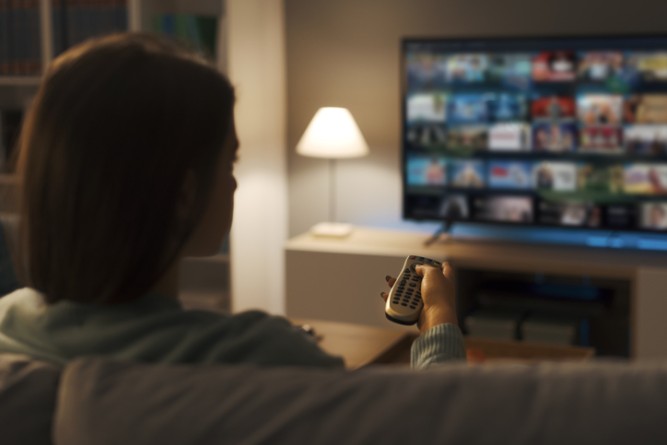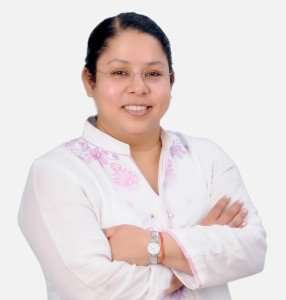India: The Delhi High Court’s Decision in OpenTV
31 May 2023

Analysis of the Delhi High Court’s Decision in OpenTV Inc v. Controller of Patents and Designs and Anr
Arguably, Section 3(k) and Section 59 objections are the most recurring objections during the examination of patent applications by the Indian Patent Office (IPO). There have been quite a few decisions in recent times that have discussed the scope and interpretation of Section 59, such as Nippon A&L Inc. v. The Controller of Patents, Boehringer Ingelheim International Gmbh v. The Controller Of Patents & Anr, and Allergan Inc. v. The Controller of Patents.
The objective of the court has been to clarify the nature of amendments that can be made to the claims during the prosecution of the application. On the other hand, while there has been quite some jurisprudence on clarifying the exclusion of computer programs per se or algorithms from patentability as per Section 3(k), the aspect of exclusion of business methods from patentability still has a lot of scope for discussion.
Recently, an order passed by the High Court of Delhi in OpenTV Inc v. Controller of Patents and Designs and Anr threw some light on the interpretation of the business method aspect of Section 3(k) for determining of patentability of an invention. The order also discussed the scope of Section 59 for making the claim amendments during the prosecution. In this case, an application titled “System and method to provide gift media” was refused by the IPO based on the below-mentioned grounds. An appeal was filed by the applicant before the High Court of Delhi.
- Non-compliance with the amendments made to the claims, during the hearing stage of the prosecution, with the provisions of Section 59; and
- Non-patentability under Section 3(k) as the invention was held to be a business method.
Non-compliance of the claim amendments with Section 59
The subject patent application is stated to be a network architecture and a method implemented on the same to enable the exchange of interactive media content distribution of any type of digital or tangible media. During the prosecution of the application, the applicant had amended the claims at the time of the hearing of the application, which was found to be in non-compliance with Section 59 in the refusal order.
Opportunity to amend claims during the appeal proceedings
During the appeal proceedings, the court offered an opportunity to the appellant to amend claims. Particularly,on April 22, 2022, the appellant was asked if it intends to prosecute the claims as they stand or whether any further amendments thereto are to be made. Accordingly, the appellant filed an alternative set of claims which the appellant wished to prosecute in the appeal. In these claims, the appellant basically reworded the method claims to system claims, seemingly, in an attempt to circumvent the scope of a business method.
Respondent’s objection to the opportunity
The respondent objected to this opportunity given to the appellant, arguing that there is no provision to amend the claims at the appellate stage where the application is refused by the Controller under Section 15 of the Patents Act, 1970. However, he later conceded that as per the decision of a Coordinate Bench of this court in Societe Des Produits Nestle Sa v. Controller of Patents and Designs, 2023/DHC/000774,appellate stage amendments can be permitted.
The respondent further argued that the amended system Claims 4 to 16 were newly added system claims which were never a part of the originally filed claims. Therefore, this amendment ought not to be allowed owing to the limitations imposed by Section 59, and also on the rationale that ‘what is not claimed is disclaimed.’ The respondent also argued that changing the method claims to system claims would not affect the patentability analysis, as it is still a system to provide something as a gift, and therefore in effect, still constitutes a business method. Thus, even the amended claims would continue to be hit by Section 3(k) of the act.
Delhi High Court’s findings
After hearing both parties, the court first addressed the question of whether the claim amendments can be permitted at the appellate stage, at the instance of the applicant. The Delhi High Court held that there is no embargo on permitting an applicant to amend claims even at the appellate stage.
The court held that the system claim, which is now sought to be patented as Claim 1, may be within the overall scope of the specification but is not within the scope of the originally filed claims. Conversion of method claims into system claims in the manner sought to be done would be broadening of the claims, which is impermissible as per Section 59 of the act. The court also observed that there may be some exceptional cases where such a conversion may be permissible depending on the nature of the invention and the scope of claims.
The fundamental principle governing amendment of claims is that amendments are permissible as long as the amendments are within the scope of the originally filed claims. However, the amendment sought in this particular case intends to widen the scope of the originally filed claims. It is due to this reason that the same cannot be allowed. Therefore, the claims as they stood originally were considered and accordingly, further arguments were made on the claims that were refused by the Controller.
Non-patentability of the invention as being business method under Section 3(k)
Appellant’s arguments
The appellant argued that only because there are financial gains that can be achieved through a particular patented invention, the invention cannot automatically be concluded to be a business method. The Appellant relied upon the network architecture of the invention to establish that the novelty resides in the two-way communication channel between the headend system and the set-top-box, in contrast to the existing art where only one-way communication between the headend system and the user is possible. Hence, there is a clear technical advancement in the claims and the mere use of the word “method” in Claim 1 should not completely deprive the applicant of obtaining a patent on a novel and inventive system.
The appellant further argued that the effect of the invention would be monetary in most inventions, but that would not prohibit the grant of the patent under Section 3(k) of the act as long as the technical effect can be shown. Thus, if the technical architecture is innovative and novel, the same is liable to be granted a patent.
Respondent’s arguments
On the other hand, the respondent argued that a perusal of the claims itself would show that the subject patent is a business method as the focus of the claims is on the aspect of giving a media item as a gift. There is no ambiguity in Claim 1 in the fact that it is meant to promote the user with a method to give the media item as a gift which is nothing but a business method.
Court’s findings
After hearing both parties, the court held that a perusal of the patent specification would show that the purpose of the subject invention is to enable the giving of media as gifts. The bar in India to the grant of business method patents must be read as an absolute bar without analyzing issues relating to technical effect, implementation, technical advancement, or technical contribution. Thus, the only question that the court or the patent office, while dealing with patent applications involving a business method, needs to consider is whether the patent application addresses a business or administrative problem and provides a solution for the same.
The court held that though there is no doubt there is two-way communication, the purpose of the invention is primarily to enable the giving of a media in tangible or intangible format to the recipient. Such a giving of a media, irrespective of whether is worded as a method or as a system, would be nothing but a method for doing a particular business, i.e., for giving of a media as a gift.
Interestingly, the court also referred to the status of the corresponding applications in other jurisdictions as provided in the latest Form-3 and observed that the appellant has itself declared that it has abandoned the patent in several jurisdictions. It appears from the order that the court took that as an indication that the invention is a business method and is not patentable, leading to the applicant abandoning the application in other jurisdictions. The reliance on Form-3 in this manner is arguable because the abandonment of an application by the applicant cannot be equated with the rejection of the application by the patent office. During the course of the prosecution of applications, the applicants sometimes prefer to abandon the application, owing to the ever-changing market dynamics and other similar factors. Moreover, the application is granted in some jurisdictions as well, which could very well contradict this reasoning altogether.
Finally, the court held that the subject invention is directed purely towards a method of giving a media as a gift which is nothing but a method of selling a media for gift purposes and is hence a business method. The subject invention is attracted by the exclusion from patentability under Section 3(k) of the act.
Moreover, the court went beyond the scope of the present matter and acknowledged the ever-mounting need of updating or clarifying the Section 3(k) limitations by referring to the Parliamentary committee report. However, the court observed that the modification of Section 3(k) would be in the legislative domain. In terms of the statute, as it stands, business method inventions are not patentable.
Further, the court observed that a large number of inventions in emerging technologies, including by SMEs, start-ups, and educational institutions, could be in the field of business methods or application of computing and digital technologies. There is a need to re-look at the exclusions in Section 3(k) of the Patents Act, 1970, in view of the growing innovations in this space. Accordingly, the court directed the Registry to send a copy of the present order to the Secretary, DPIIT, Ministry of Commerce and Industry for necessary consideration.
Key takeaways
- There is no embargo on claim amendments even at the appellate stage. However, the amendments shall comply with the provisions of Section 59.
- The bar in India to the grant of business method patents must be read as an absolute bar without analyzing issues relating to technical effect, implementation, technical advancement or technical contribution.
- Thus, the only question that the court or patent office, while dealing with patent applications involving a business method, needs to consider is whether the patent application addresses a business or administrative problem and provides a solution for the same.
- The status of the corresponding applications in Form-3 does have a persuasive value before the courts.
This decision by the High Court of Delhi has reaffirmed the interpretation of Section 59 as laid in the Nipponmatter, the Boehringer matter and the Allergan matter. Further, it has provided clarification on the interpretation of the scope of business methods for determining patentability under Section 3(k). Moreover, the reference to the Parliamentary committee report and the referral to the DPIIT clearly indicate that the courts are opting for a futuristic approach, acknowledging the ever-evolving technology global space. With such a proactive approach taken by the courts, we could expect further significant improvements in the already-improving IP framework of the country in the times to come.









